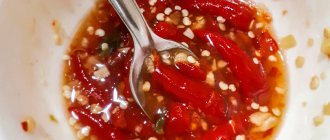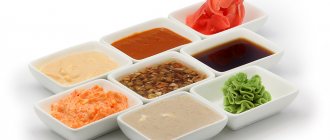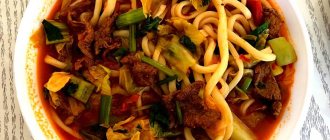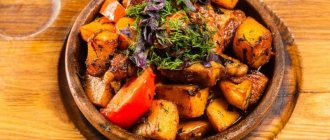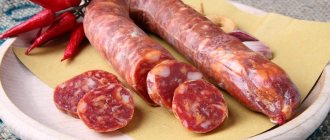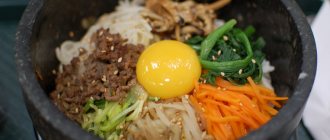French cuisine, national and local: what to cook and where to eat. Recipes, cooking methods, snacks, desserts, hot dishes and drinks in France.
- New Year tours
around the world - Last minute tours
around the world
The pride of all French people is the cuisine of France. “Haute cuisine” is akin to haute couture, is used only on special occasions, and requires experience and appropriate preparation. Gourmets are connoisseurs of gourmet food and are held in high esteem and respect in France. In French cuisine, everything is important - the taste of the dishes, their decoration, the order of serving, cutlery and accessories.
FRENCH CUISINE / What to cook in French? / Kitchen with a French accent
France is very diverse in the culinary sense. The cuisine of Burgundy is very different from the cuisine of Provence. But, despite the regional differences in French cuisine, a characteristic feature of the national cuisine of France is the abundance of vegetables, herbs, seasonings and root vegetables.
Salads made from fresh vegetables and herbs are especially widely represented in French cuisine. Moreover, the French salads are both snacks and light side dishes for meat or game. It’s not uncommon to find salad as a side dish for fish.
French cuisine is unique in the opinion of a Russian person, and a European in general. Compared to many European countries, French cooking practically does not use dairy products. The exception is cheeses that are famous throughout the world. Before the main course for lunch or dinner, be sure to serve a platter of cheeses and a green salad. Sometimes a cheese plate is served at the end of the meal, before dessert.
French cheeses are considered an exquisite treat and a delicious delicacy for true connoisseurs. Did you know that more than 500 types of cheese are produced in France? But there may well be more, because almost every French village knows its own unique ancient recipe for making cheese. Surely you know or have heard about the most famous varieties of French cheese, such as Roquefort, Gruyere, Camembert, etc.
Vol au vent | Volovan
A savory French appetizer that is a must-try for gourmets. In France, this savory dish is usually served to warm up the appetite (although vol-au-vent is quite filling, it can also satisfy hunger). Vol au vent is a neat hollow tower made of golden puff pastry. Its diameter can vary from 3 to 20 cm. The hole is filled with delicious minced meat, seafood, mushrooms or vegetables. A real delicacy of French cuisine is vol-au-vent with truffle filling. Some types of snacks are additionally baked in the oven to form an appetizing crust on top.
In French supermarkets you can buy whole preparations or snacks. So if you don't know where to have a delicious lunch in Paris, consider this option. Moreover, many vol au vent can be eaten cold.
What to cook in French?
The French table is characterized by omelettes and cheese soufflés; they are prepared with various seasonings and fillings: ham, meat, mushrooms, asparagus or herbs.
French cuisine is based fundamentally on the freshest ingredients. The quality of all food preparation products is carefully selected and checked. Chefs of French restaurants always and only personally select each tomato, onion, fish or bunch of lettuce.
The French love soups and soups. Of course, the French table does not indulge in borscht and solyanka, but we advise you to try making leek soup with potatoes and onion soup seasoned with cheese. There is another very tasty and unusual Provençal thick fish soup called bouillabaisse.
Speaking of fish. A lot of fish and seafood can be found in French cuisine. But the most common dish served in expensive restaurants is oysters. This delicious treat of freshly shucked oysters is served from September to October. The rest of the year, oysters are served from refrigerators.
The preferred drinks are juices, mineral water and coffee. Alcoholic drinks include Calvados, absinthe, cognac and, of course, a variety of wines. A Frenchman will not sit down to dinner without a glass of Bordeaux. Although the younger generation increasingly prefers beer.
Casual French cuisine
French cooking is conventionally divided into three parts: popular, regional and haute cuisine, an example of which was the court cuisine of the French kings. It is clear that this division is very arbitrary: after all, for example, a Burgundian dish, which in Paris will be considered regional, in Burgundy itself will be classified as common. However, some of the principles of cooking and recipes for some dishes can be considered common throughout France.
A feature of French cuisine is the widespread use of wines, cognacs and liqueurs in the preparation of a variety of dishes. As the alcohol evaporates, it gives the dish a specific “French” taste and aroma. Red wine is used for preparing meat dishes, and white wine for fish dishes (although this rule is not always observed). Wine also serves as the main component of many marinades and broths. Strong drinks (cognac, armagnac, Calvados apple brandy) are used for flambé - a special method of cooking meat, in which the finished dish is poured with alcohol and set on fire before serving. A dish of flaming meat decorates the table, turning dinner into a show.
Another subtlety of French cuisine is the skillful use of spices, but not in crushed form, as is customary in Russia, but in the form of a “bouquet” of herbs, which is placed in a dish during cooking and removed before serving. It cannot be said that the French use some special expensive spices that cannot be bought outside of France. The famous bouquet “garni” consists of just parsley, savory and bay leaf. Most of the fragrant herbs that the French use grow in Russia: tarragon, basil, thyme, sage, mint, angelica, chervil. However, Russian housewives are not traditionally accustomed to them, so they do not add them to their food. However, to successfully use spices, you need to know a lot about them - understand flavor combinations and dosages. Spices should be used in very small quantities to only enhance the taste of the dish.
Meat plays a special role on the French table. What do Russians know about meat? The fact that there is beef, veal, lamb and pork. Perhaps we can also name several parts of the carcass: brisket, fillet, tenderloin. And, of course, we know that meat can be steamed (very good!), chilled (not bad) and frozen (worse, but still edible). All this knowledge, usual for the average Russian, is completely insufficient for a Frenchman! The French, for example, know that milk lamb tastes best in June - at the age of two months. And they will never confuse the milk lamb with the Easter lamb, which is supposed to be slaughtered exactly at one hundred days of age. But it turns out that it is best to slaughter a lamb at the end of spring, while the grass on which it feeds is not yet scorched by the sun. And the best lamb is the “salty meadow lamb,” which grazed in pastures located near the sea. The taste of such lamb cannot be confused with anything else, the French assure.
The French consider the meat of a pregnant cow or a bull killed in a bullfight to be tasteless. But the meat of beef bulls, which are castrated at a strictly defined age and then fattened, is highly valued. The best veal is the meat of a 10-12 week old calf, fed only with milk and raised in special conditions. And any Frenchman will tell you that the best veal is Normandy.
Of course, today many French meat subtleties are a thing of the past. Even in France it is now impossible to get the magnificent white Parisian veal “extra”, for which the calves were fed exclusively with whole milk (they were even muzzled to prevent them from chewing anything extra) and kept in cramped warm barns where there was no opportunity to move. A few days before sale, flour and eggs were added to the milk for calves to give the meat special tenderness. Modern French farmers are no longer puzzled by such difficulties. However, against the backdrop of a global craze for hormones and artificial additives, France continues to “keep its mark” when it comes to meat. Given the French reverence for nuances of meat taste, it is not surprising that this nation consumes meat almost raw. World cooking distinguishes three stages of meat readiness: “rare”, “medium-rare” and “well-done”. However, the French came up with six stages of readiness: “very raw” or “blue” (the piece is slightly fried on both sides at a temperature of 55 degrees), raw (slightly more cooked at a temperature of 60 degrees), medium raw (63 degrees), medium (71 degree, what in the world culinary tradition is called “with blood”), ready (77 degrees, medium-rare piece, reddish inside), and over-ready (what the French call “sole”, and a Russian housewife would consider normally cooked meat). In fact, the French also distinguish several intermediate stages, the intricacies of which chefs must understand. God forbid that a Frenchman who ordered meat at a stage between “blue” and raw” should be given a piece that does not correspond to his order! The scandal will be huge. By the way, another rule is that the lower the temperature for cooking meat, the hotter the plate should be: blue meat is served on an almost hot porcelain dish.
A side dish for meat usually consists of a variety of vegetables: potatoes, green beans, various varieties of onions, spinach, various varieties of cabbage, tomatoes, eggplant, celery, parsley, salads. Vitamin-rich vegetables such as asparagus, artichokes, leeks, and lettuce are especially popular. A prominent place is given to vegetable salads, both fresh and canned. Main meat courses are usually served with green salad and cabbage salad. By the way, the Russian passion for potatoes is incomprehensible to the French: potatoes can be used as one of the components of a complex side dish, but not a single French housewife will allow herself to serve a side dish consisting of a single type of vegetable. The French never eat cereals in the form of porridge, but they willingly eat fluffy rice, peas, beans, beans, and lentils.
When it comes to soups, the French prefer puree soups (they call them “cream”) or clear broths. Particularly popular are leek soup with potatoes and onion soup seasoned with cheese. The Provencal fish soup “bouillabaisse” is also widely known, for the preparation of which, according to all the rules, you need not only fresh fish, but also the smell of sea grass and algae. By the way, don’t be surprised if you are served soup before the appetizer at lunch - this is the accepted order for serving dishes in France.
The economy of the French, which has become proverbial all over the world, is also reflected in French cooking. The French themselves call it “leftover cuisine,” hinting at zero waste. Peels of vegetables and fruits, tops, offal, yesterday's bread - everything goes into use, nothing is thrown away. If you come to visit a Frenchman, the table will not necessarily be laden with food. The hosts can offer you drinks and, as a snack, so-called “amuse-gueule” (translated from French as “fun for the throat”). These can be small cookies, combined with salty and sweet additives, “canopy” sandwiches, puffed rice and other little things (in a thorough Russian opinion). “Having fun” with these tiny snacks, however, you can “trick your stomach” and get enough without burdening your owners’ pockets.
According to the French, even a failed dish should still be made edible and served. This is probably why French cuisine invented so many sauces. It is not for nothing that a gloomy saying appeared in this country: “an architect covers mistakes with a façade, a doctor with soil, and a cook with sauce.” The French are terribly proud of the variety of their sauces, teasing their neighbor England with the fact that it has “three types of sauces and three thousand religions, and in France, three thousand sauces and only three religions.” In fact, this is a slight exaggeration: there are not so many bases for sauces - no more than a dozen. However, on this basis, the inventive French were able to create thousands of diverse and exquisite combinations.
“You can learn to cook and fry, but you cannot learn to make sauce, this requires talent, and you need to be born with this talent,” argued Brillat-Savarin and, apparently, he was right. In any case, do not confuse French sauce with the terrible gravies that are served in many domestic canteens. A mixture of overcooked flour, fat and salty broth without any spices discredits the very concept of “sauce”. You can draw a map of the world by the names of the sauces: French chefs came up with Dutch, Portuguese, Italian, English, Bavarian, Polish, Tatar and Russian sauces. True, it should be noted that none of them has anything to do with the corresponding national cuisines - they rather reflect the fantastic ideas of the French about foreigners. Thus, Russian sauce got its name because of the caviar it contains, although its other ingredients - mayonnaise and lobster broth - have never been eaten in traditional Russia. The names of the sauces can be listed endlessly: “musketeer”, “diplomat”, “financier”, “sailor”, “soubrette”. And what about the names given in honor of expensive fabrics - “velvet”, “muslin”, “silk” - these names emphasize the delicate consistency of the sauces. French sauces have not least contributed to the creation of the legend of the diversity of French cuisine: after all, the same dish, served with a different sauce, seems completely new.
Culinary discoveries of the French
- The French are the inventors of sauces; in their preparation and inventing new recipes, no equal can be found in the whole world.
- The French add a small bunch of herbs to most dishes, which gives these dishes a unique French flavor. It has an interesting name - “bouquet garni” and consists of parsley, thyme, bay leaf, etc. The bunch is removed before serving. You can create such a bun yourself to suit your taste, but it was the French who invented it.
- We can’t help but mention the chic French desserts. This is a fragrant cherry clafoutis pie, magical open-faced fruit cakes tarte tatin and, of course, the famous creme brulee - the king and ruler of all desserts, made from cream baked with a caramel crust.
French cuisine
France is a subject of the world and a romantic ideal for millions of people. Why are we so loved? For the mortal rhythm of life? Charming architecture and little courtyards? Do I recommend Eiffel for landscapes? For a flair of romance? What about delicious French cuisine, the like of which is not found anywhere in the world?
French croissants and baguettes have become popular among rich people. They can be bought practically in any country or in most places. France doesn't have a traditional dessert, and it's fair to say that you won't taste proper croissants anywhere else than in French bakeries. French cooks cook vicor especially carefully and preserve culinary secrets, which is why their vicor is so valuable.
Experience French cuisine
French cuisine is very rich and varied. Traditional French recipes contain a lot of locality. Since in modern France there are light herbs, with a large amount of seafood and fish, the more the region is located away from the sea, then important herbs will be prominent in the local menu. Brings together French cuisine with love for sires, wine and sauces.
France has a practical understanding of fast food. For the French, they accept that there is no rush for a full meal, with repeated serving. Go home. It first begins with appetizers and includes soups, salads, and more. For a long time now, on the streets of France it was impossible to make a mortgage with a street hedgehog. In general, French cooking is intelligently divided into two categories: haute and homemade. The stench of carnage is crazy, and those that we heard under the phrase “French cuisine” are classic homemade recipes. What is French cuisine like? What are the broadest herbs?
French recipes
Onion puff pastry pie / French cuisine
Ingredients:
- 1 pack ready-made puff pastry
- 1 kg onions
- 100 gr. butter
- 3 eggs
- Salt pepper
- Sugar
- Nutmeg
- Red pepper
- Sour cream 2-3 tbsp.
Cooking method:
- Peel the onion and cut into thin rings, mix with tsp. salt, pepper, sugar and fry in butter (or margarine). The onion should become transparent and soft, but fried until golden brown. Mix sour cream, fresh eggs, 0.5 tsp. salt, red pepper and nutmeg. Beat everything and place in a bowl with fried onions.
- Defrost the dough and cut a piece to fit the baking tray or mold. Place the dough into a greased pan. Raise the edges of the dough so that the edges come out. Prick the dough over the entire surface.
- Cool the prepared onion filling and place it on the dough, put it in a hot oven. Bake for 30-40 minutes. Onion pie is best served hot.
The French eat croissants for breakfast, and read how to prepare them here.
How to bake croissants
French baked chicken / French cuisine
Ingredients:
- Chicken
- Bouquet garni (arrange according to your taste)
- Garlic – 2-3 heads
- Salt pepper
- 1 b. dry white wine
Cooking method:
- Wash the chicken, rub with salt and pepper. Stuff the neck, breast area, and holes in the pockets under the wings with garlic cloves.
- Soak the chicken in white wine for about 2 hours. More is possible. Place a bouquet garni in the belly of the soaked marinated chicken, tuck the legs into the skin pockets so that the belly is completely closed. Bake the chicken until done. When serving, remove bouquet garni from chicken and discard. White wine and boiled potatoes with cream go well with French chicken.
How to make the French Lemon Twist drink?
This drink is easy and simple to prepare. First, mix apple juice and non-alcoholic Tourtel beer, and then add lemon squeeze, chopped celery and boiled beets. All ingredients are thoroughly shaken with a shaker, then poured into a tall glass glass, which is decorated with lemon slices.
This fruit and vegetable cocktail turns out very tasty. It quenches thirst well and also contains few calories. Thanks to these properties, the French drink “Lemon Twist” improves well-being in the summer heat, in the heat, and also does not contribute to weight gain.
Culinary guide. Recipes from the king of French cuisine, Auguste Escoffier
Our work is intended primarily for practicing chefs. However, we consider it necessary to especially emphasize that the basis of the cuisine is made up of basic sauces, because in our work they play a leading role.
Indeed, base sauces are a kind of foundation, the most important and necessary element, without which further work is impossible. That's why it's so important to learn how to cook them.
However, neither the desire to do quality work, nor even talent will be enough if there is no opportunity to purchase the necessary products.
We are opposed to both destructive waste and excessive saving, which hinder the development of talent, provoke a decline in the spirit of a conscientious worker and lead him to failure.
Even the most skilled cook cannot make something out of nothing. And therefore, it is illegal to demand from him results worthy of our art if we provide him with products of poor quality or in insufficient quantities.
When it comes to basic base sauces, the most important thing is to give the cook everything he needs in terms of quality and quantity.
It is clear that what is possible in one restaurant, impossible in another, the work depends on what the clientele is, and on how it is served, as well as on the ultimate goal that the enterprise sets for itself.
Everything in the world is, of course, relative, but there is a golden mean from which one cannot deviate. And this especially applies to the basics of cuisine - basic broths and sauces. So the director of a restaurant (or other enterprise), who skimps and saves, has no right to make comments to the chef and his subordinates. And if he does make them, he must understand that they are unfair and not based on anything. He must know that it is impossible to create a good kitchen if the quality of the products is poor or their quantity is insufficient, just as it is absurd to expect that sour meat poured into a bottle will ever become good wine.
But if a cook has everything he needs, he must take special care in creating the main base sauces and constantly monitor their composition to ensure they are perfect. The progress of his work must be precise, the preparation rules must be impeccable, but this already depends on his efforts.
The basics of the kitchen consist of regular or clarified consommé; basic brown or white stock, basic poultry stock, game stock, fish stock, thick stock, or basic stock sauce;
fish broths and concentrated fish broths, which are additional elements of compound sauces;
thick broths from meat, poultry and game; gravies (flour sauces) brown, light and white;
main base sauces: “Spanish”, “Velvety”, “Bechamel”, tomato; fatty and lean jellies. And also the main base sauces are understood as “Mirepoix” and “Matignon” cuts;
kurt broths and clarified broths for meat and vegetables;
marinades and brines; various minced meats, fatty and lean; a mixture of all kinds of additional elements for side dishes, etc.
So, in the chapter "Sauces" you will find ways to prepare basic base stocks, concentrated fish stocks, stock extracts, chilled concentrated stocks, marinades, jellies, oil mixtures, etc.
The chapter “Soups” contains recipes for preparing consommé, clarified soups, and side dishes for soups.
The chapter “Side Dishes” contains recipes for preparing minced meat and various elements for side dishes.
The chapter “Fish” contains recipes for preparing kurt broths, special minced meats, etc.
From the chapter “First and second courses” you will learn how to grill, stew, and fry in a frying pan.
Ratatouille
• 4 tbsp. l. olive oil • 70 ml dry white wine • 2 tbsp. l. tomato paste • 1 small onion • 6 cloves garlic • 1 zucchini • 1 bell pepper • 2 eggplants • 9-10 tomatoes • salt • parsley, basil
Finely chop the onion, fry with garlic for 3 minutes (pass a couple of cloves through a press). Cut the bell pepper into small cubes, add to the onion, and fry for about 4 minutes. Take 4 tomatoes, peel them, put them through a blender, add to the fried onion mixture and simmer over moderate heat for about 5 minutes.
Add tomato paste, a pinch of salt and spices. Bring to a boil and simmer, covered, over low heat for about five minutes. Place half of the prepared mixture in a baking dish. Cut two eggplants, zucchini and tomatoes into thin slices and place in a baking dish.
Finely chop the parsley and basil, sprinkle on the vegetables, add three cloves of garlic that were previously passed through a press, scatter a couple of thyme sprigs, and sprinkle with olive oil. Add the remaining tomato mixture. Bake the ratatouille in the oven for about one hour at 190 degrees.
Chef's tip
It is advisable to cover the baking form on top with sheets of parchment.
Features and tidbits
Modern French recipes include many seasonings. Traditionally, these include fresh and dried herbs. A very popular mixture of “Provencal herbs”, consisting of oregano, basil, thyme, rosemary, mint, and marjoram. Spicy green onions, garlic, and tarragon are often used.
Many national dishes of French cuisine have become real symbols of France. Think crispy long baguette, deep-fried entrecote, rich meat broth, sticky fondue, delicate creme brulee, truffles and eclairs. The list can be endless.
One of the most common types of breakfast in the world, a cup of coffee with a croissant, is of French origin.
Today, any European restaurant uses salad recipes from French cuisine. The whole world knows nicoise and salad with arugula and poached egg.
The famous onion soup, representing the recipes of exquisite French cuisine, will melt the hearts of even ardent opponents of onions.
The most delicate foie gras can produce a stunning effect on the one who tries it for the first time. Various recipes of haute French cuisine for preparing foie gras, in addition to goose liver, include secret additives. It is reliably known that one of the variations of the recipe contains a rare black truffle as a savory ingredient.
The French earned the offensive nickname “frogmen” for their love of frog legs. Culinary recipes of French cuisine are not complete without the delicacy grown on special farms.

